The Books of James Herriot
Are you delighted with the adaptation of All Creatures Great and Small on MASTERPIECE on PBS? Discover (or rediscover) the timeless charm in the books by a Yorkshire veterinarian that inspired the series. We’ve laid out the books in order for you and added some context about the author, along with reactions from our adaptation’s lead writer Ben Vanstone (The English Game, The Last Kingdom, Merlin, East Enders) as he read Herriot’s stories for the first time.
But first try to picture this full-time vet at age 50 after a demanding day visiting isolated farms and tending to large animal livestock in distress. In front of the evening television, he bangs out drafts of short stories with an Olivetti typewriter in his lap. It turns out Herriot found writing to be a most relaxing hobby! And it wasn’t until 25 years into his veterinary career that he pursued publication of his first manuscript. Even then, it took four years to find a UK publisher.
- 1.
All Creatures Great and Small
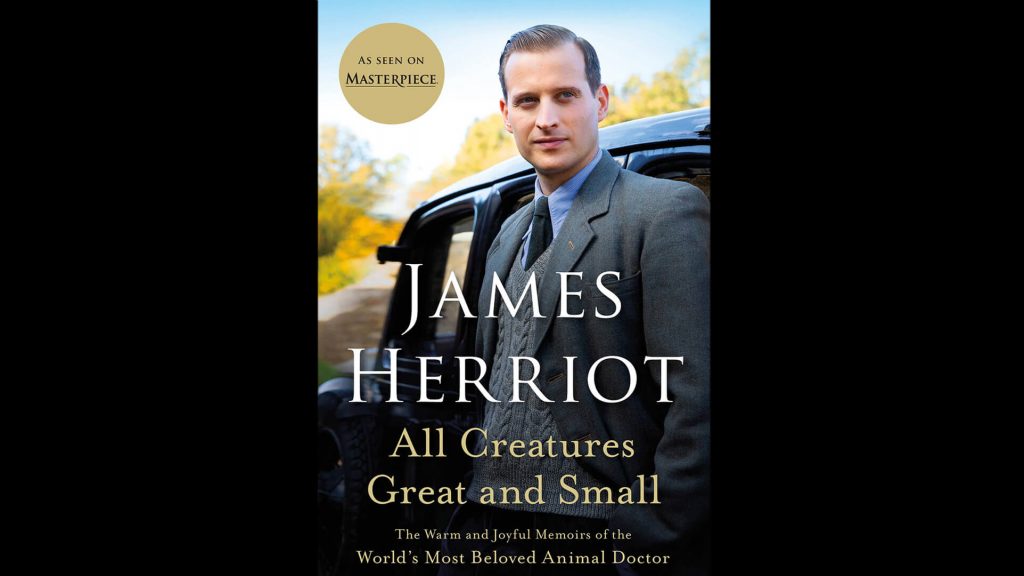

First published in 1972 Book Summary: We meet young Herriot as he lands a job at a rural veterinary practice in Yorkshire, England during the 1930’s Great Depression. His early experiences living and working with Siegfried Farnon and Siegfried’s brother Tristan are told in short, anecdotal chapters—including the comings and goings at Skeldale House, meeting quirky Dale farmers and townspeople, and caring for their animals. (St. Martin’s Publishing Group, reissue edition, 2020.)
Did You Know? James Herriot was a pen name chosen by British veterinarian, James Alfred Wight. The pseudonym made sense as the Royal College of Veterinary Surgeons frowned on members who advertised. (Jim Herriot was actually the name of a professional soccer player of the era.)
Two shorter volumes by Herriot had been published in the UK before St. Martin’s Press in New York combined them for an American audience as All Creatures Great and Small. The title is borrowed from the 19th century Anglican hymn All Things Bright and Beautiful with lyrics by Cecil Frances Alexander. In fact, all four lines from the hymn’s chorus were eventually used for Herriot books published in the states. The new book wasn’t reviewed in the U.S. until months after its 1972 publication and only when positive word of mouth spread. It became a bestseller soon after and saved St. Martin’s Press, which was financially struggling at the time.
Vanstone’s Take: Our adaptation’s lead writer remembers watching the original BBC series Sunday nights as a kid, but he hadn’t read the stories until getting involved in the new production. “What I loved about the books is the way he’s able to paint a world. His characters are really well-written, there’s a lot of heart in them.” Meanwhile, Vanstone is incredulous that Herriot found time to write at all. “I respect anyone who manages to finish any piece of writing, let alone someone who does so while managing another job alongside. I think it shows that he must have had an incredible passion for the stories he tells and that shines through in the writing.“
- 2.
All Things Bright and Beautiful

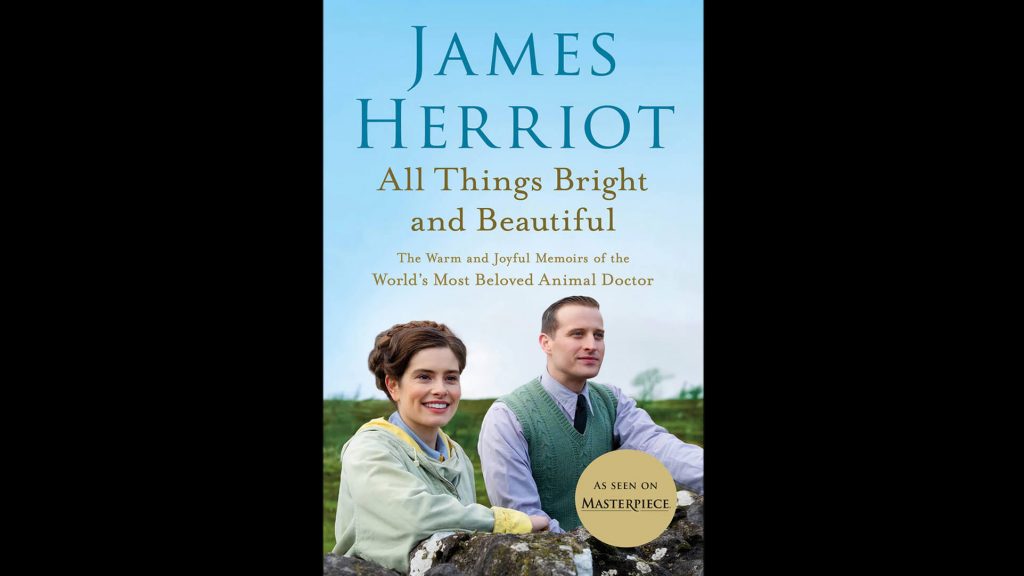
Originally published in 1974 Book Summary: Readers continue to get compelling, humorous stories of the young vet, still in the early years of his professional practice with the Farnon brothers. Other singular characters are also introduced, including the “highly effective” neighboring veterinarian, Ewan Ross who hires James to test cows for TB, a student observer named Carmody, and the colorful Granville Bennett, a small animal vet invited to help with special cases. Herriot’s gentle love story also runs through this sequel and the book closes with his being called for duty in the Royal Air Force as Britain is on the verge of war. (St. Martin’s Publishing Group, reissue edition 2020.)
Did You Know? St. Martin’s Press continued the practice of combining slimmer UK publications of Herriot’s before releasing them in the states. And from this U.S. sequel onward, the books received enthusiastic reviews and quickly earned bestseller status. America was a huge fan base and visiting tourists became so commonplace in the waiting room at Skeldale House that Herriot set aside two afternoons a week to greet them and sign books. According to his family, Herriot otherwise spoke little about his achievements, and his attitude to friends and clients remained unchanged. Meanwhile, film adaptations of Herriot’s books came as early as 1975, with the British release of All Creatures Great and Small starring Simon Ward and Anthony Hopkins as James Herriot and Siegfried Farnon.
Vanstone’s Take: Again, the series writer was struck by Herriot’s innate skill. “[He’s] a master of observation. He vividly captures the world of 1930s Yorkshire Dales and the people who live there in a way that is full of incredible heart and warmth.” Vanstone was also inspired by the local landscape, almost a character itself. “There’s the reality of what the Dales was like. There’s a harshness to it, which I love. [It’s] incredibly evocative of a place and time that almost seems like another world now.” Vanstone ended up dipping into Herriot’s sequel for the adaptation. “It might sound trite, but it’s also important to have a wide variety of different animals across the series, so we [had] to cast our net across both books to balance the needs of the show.”
- 3.
All Things Wise and Wonderful

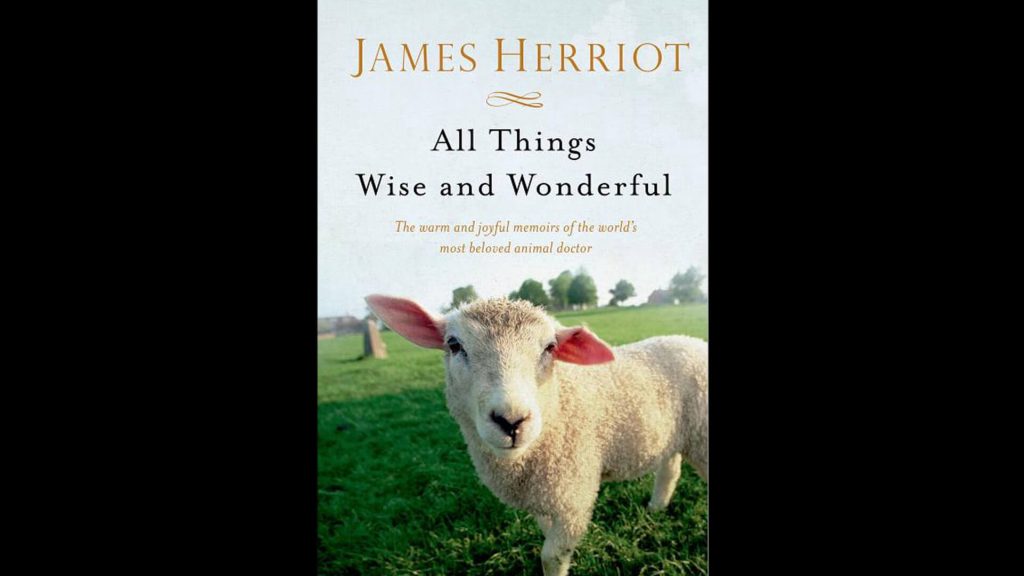
First published in 1977 Book Summary: In this third volume, readers contemplate a country entering World War II. James has traded in his Yorkshire wellingtons for a shapeless flight suit: he is enlisted by the RAF into basic training. Chapters start with stories of pilot school and lonely military life, then flash back to warmer memories of James serving his Dales’ clientele. It turns out that Herriot never sees military action, however. Requiring surgery, he becomes disqualified for combat. By the end of book, James is discharged from the RAF and ready to return to his young wife and his beloved Darrowby. (St. Martin’s Griffin, reissue edition 2015.)
Did You Know? With the exception of two and a half-years in the Royal Air Force during World War II, James Herriot remained at the same Yorkshire veterinary practice with Donald Sinclair (Siegfried Farnon) for the rest of his career. He continued to be a full-time vet but reduced the salary he took from the practice, based on income received through his writing. After the success of his first three books, Herriot received the Order of the British Empire in 1979, as recognition of his contributions to the image of the veterinary field and for the pleasure his stories brought to millions of readers.
The television series produced by BBC and A&E began airing in 1978 and its 41 episodes over two years covered nearly every aspect of Herriot’s books to date. An estimated 13MM people regularly watched. Herriot had script approval, paid regular visits to the set, and was said to thoroughly enjoy the series, which propelled actor Christopher Timothy to celebrity status in the leading role. The actor remained closely in touch with the author and his family for years.
- 4.
The Lord God Made Them All

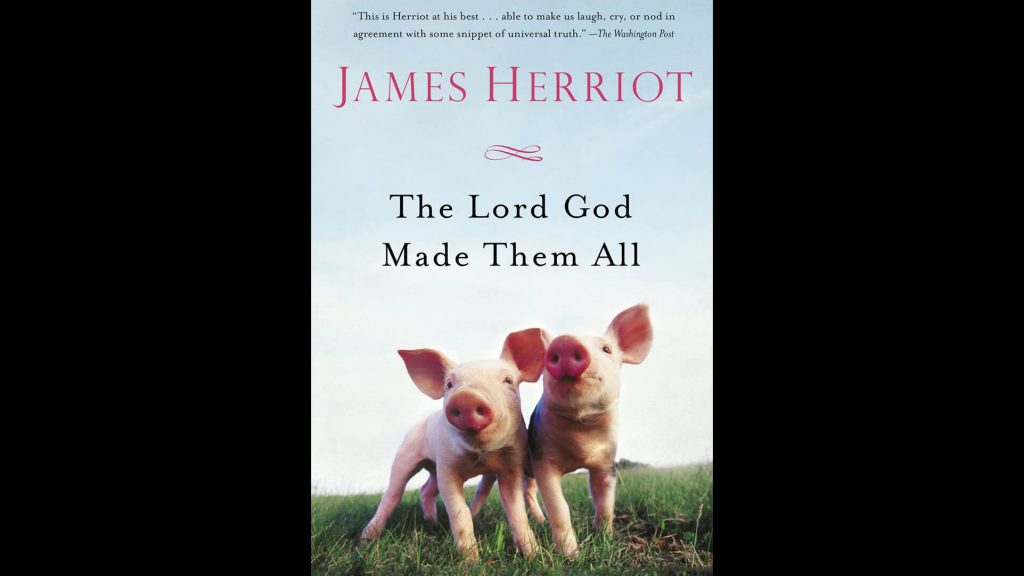
Originally published in 1981 Book Summary: With Herriot home from the RAF, this title provides stories of post-war life in Darrowby. These are years of major medical advances, but the hard-working locals haven’t changed much at all. Herriot now makes veterinary calls that occasionally include his two young children, Jimmy and Rosie. What’s especially new for readers are diary-like entries peppered throughout this fourth book, describing a time when Herriot traveled to Russia and Istanbul as a supervisory veterinarian, caring for animals being sent overseas. (St. Martin’s Griffin, reissue edition 2015.)
Did You Know? An established “James Herriot industry” now boomed, with millions of his stories sold in hard cover, many millions more in paperback, and the BBC series airing internationally. The area of Yorkshire made famous by the books and television became commonly known as “Herriot Country”. And with the election of a Conservative government in Great Britain two years earlier, Herriot was now able to keep a higher proportion of earnings from his writing so that by 1981, he was officially a millionaire.
- 5.
Every Living Thing


First published in 1992 Book Summary: Herriot is now an experienced veterinary surgeon in the early 1960s, living with his family in a house he’s purchased, and having quite happily spent his entire professional career with Siegfried Farnon in Darrowby. Their veterinary practice has expanded: readers meet the talented assistant John Crooks and the eccentric one, Calum Buchanan, otherwise known as “the vet with t’badger”. The author’s young children are again in these stories, accompanying their father on his rounds. And James is still tending to Tricki Woo. (St. Martin’s Griffin, reprint edition 2015.)
Did You Know? While the author had not published new material as a book after 1981’s The Lord God Made Them All, he had been asked by the BBC during that time to develop original material for a resurrected television series (1988-1990). Completely new characters were created for the show, characters Herriot then included in this final book, published a decade after his previous one.
After close to half a century caring for animals and long after his celebrity, Herriot retired at age 73—three years before this title was published. He’d told few people of his intentions to write another book and gave himself the liberty of taking four years to finish the manuscript. Herriot had become so successful he was said to refuse making changes suggested by his long-time editor at St. Martin’s Press. The book’s title comes from the Book of Ecclesiastes and was dedicated to Herriot’s dogs, Polly and Bodie.
Vanstone’s Take: Herriot’s timeless stories have never been out of print and are beloved by readers around the globe. Vanstone confesses it is only now that the series is airing that he has started to “engage with the fact that people really care about [the books].” He believes readers connect with Herriot’s compassion. “His greatest skill lies in the empathy he has, not just for the animals he treats but also the people he meets along the way. So, while his writing always has a rich vein of humor running through it, it never feels cruel or unkind. I suspect this same sense of empathy that made him such a talented vet also underpins his great success as a writer.”
- 6.
Additional Herriot books

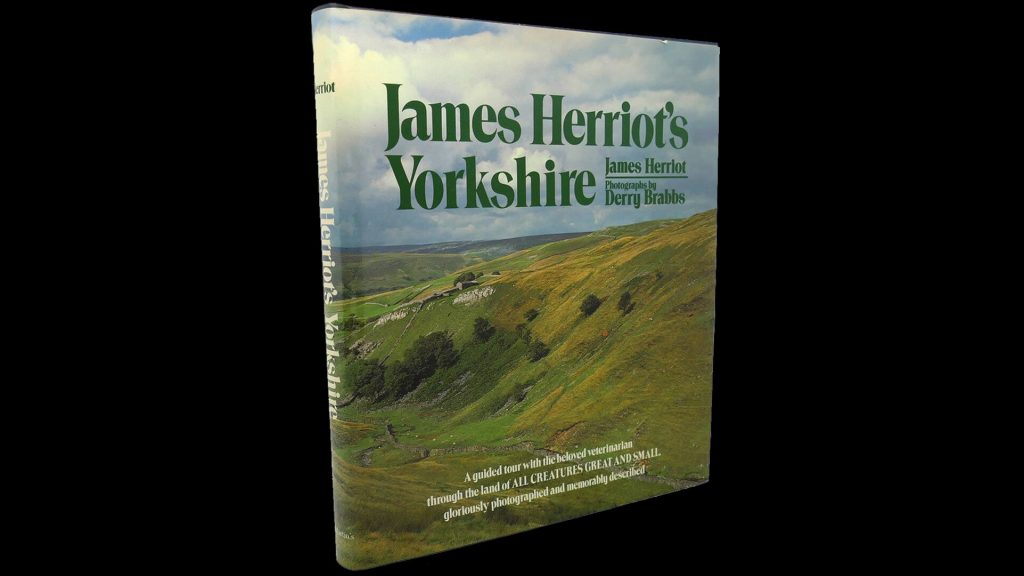
Once Herriot’s celebrity was established, his publisher urged him to author the nonfiction book, James Herriot’s Yorkshire (1979), which is a guided, pictorial tour of the setting for All Creatures Great and Small and one of his top-selling titles. Publishers also drew from previous work to create omnibus Herriot collections and even children’s picture books:
Compilations:
The Best of James Herriot (1983)
James Herriot’s Dog Stories (1986)
James Herriot’s Treasury for Children (1992)
James Herriot’s Cat Stories (1994)
James Herriot’s Yorkshire Village (1995)
James Herriot’s Favorite Dog Stories (1996)
James Herriot’s Animal Stories (1997)
James Herriot’s Yorkshire Revisited (1999)
James Herriot’s Treasury of Inspirational Stories for Children (2005)Children’s books:
Moses the Kitten (1984)
Only One Woof (1985)
The Christmas Day Kitten (1986)
Bonny’s Big Day (1987)
Blossom Comes Home (1988)
The Market Square Dog (1989)
Oscar: Cat About Town (1990)
Smudge, The Little Lost Lamb (1991)
Interested in purchasing James Herriot’s books? You can find All Creatures Great and Small and All Things Bright and Beautiful on ShopPBS.org and each purchase you make supports public television.




















